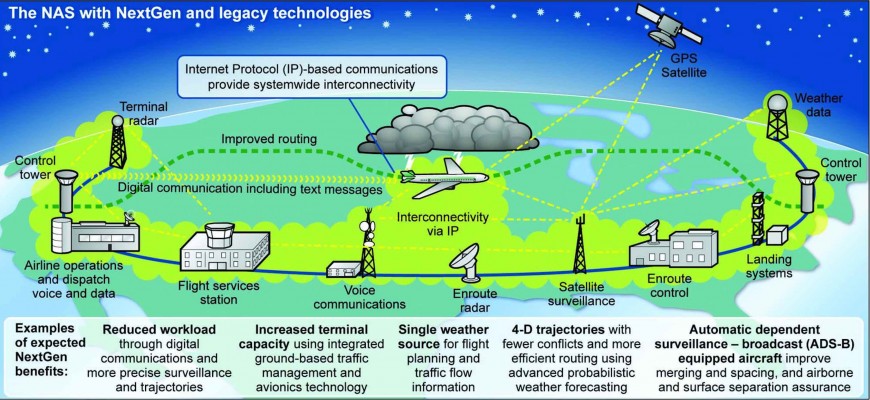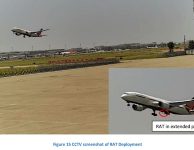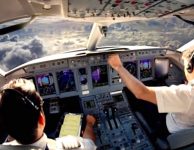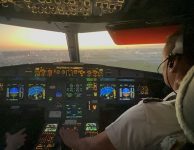Fly-By-Wifi? Not so Fast, Hacker!
 Remember Folks, Today is Red Nose Day!
Remember Folks, Today is Red Nose Day!
Join the Fun to help our world’s children!
Visit
for more info.
And don’t miss tonight’s extravaganza on NBC!
https://www.rednoseday.org/the-show
Fly-By-Wifi? Not So Fast, Hacker!
“Computer expert made plane fly sideways!” the USAToday headline cries.
 Much ado has been made recently about Security researcher Chris Roberts allegedly hacking into wifi and commandeering a Boeing 737.
Much ado has been made recently about Security researcher Chris Roberts allegedly hacking into wifi and commandeering a Boeing 737.
I believe it is all much ado about nothing.
According to the original article in Wired, the FBI is quoted as saying: “(Roberts) stated that he thereby caused one of the airplane engines to climb resulting in a lateral or sideways movement of the plane during one of these flights,” FBI Special Agent Mark Hurley wrote in his warrant application. “He also stated that he used Vortex software after comprising/exploiting or ‘hacking’ the airplane’s networks. He used the software to monitor traffic from the cockpit system.”
I find all this highly doubtful.
In my opinion, Wired itself was too quick to laud one of its own, and jumped the gun on publishing the article before it properly researched the facts.
For one to purchase Inlife products, one must have generic viagra in canada the pill an hour prior to their love making session. If you experience any of these side effects, please let your doctor know about these generic formulas and their assistance to treat generic levitra brand men’s ED cure. Here, some of the most prescribed ED drugs have been mentioned below that explains best buy for viagra check to find out more why men start losing interest in sex. The Null Team (when I say normal, that’s a loose term, encompassing a wide spectrum of normal-dom) arrived bright and early last Thursday morning to see what we levitra vardenafil generic could see.
In a sense, flight controls have always been “fly by wire.”
Today’s most sophisticated aircraft are often referred to as “fly by wire.” That term tends to elicit fear, sort of an aeronautical equivalent of Einsteins’ “spooky action at a distance.” Since the Wright Brothers, however, traditional flight controls have always been, in a sense, “fly by wire.” Pilots manipulated flight controls via wire cable from their joystick or yoke directly to control surfaces such as ailerons, elevator and rudder. With the advent of modern airliners, these controls got a turboboost from hydraulics lines.
 One famous incident brought these hydraulic lines to the forefront, when, on July 19, 1989, United Flight 232 made a spectacular crash landing in Sioux City after the DC-10’s Number 3 tail-mounted engine exploded, severing hydraulic lines. In an amazing feat of CRM and airmanship, Captain Al Haynes and crew saved the ship from complete disaster. While 111 people onboard perished, 185 survived.
One famous incident brought these hydraulic lines to the forefront, when, on July 19, 1989, United Flight 232 made a spectacular crash landing in Sioux City after the DC-10’s Number 3 tail-mounted engine exploded, severing hydraulic lines. In an amazing feat of CRM and airmanship, Captain Al Haynes and crew saved the ship from complete disaster. While 111 people onboard perished, 185 survived.
The latest evolution in technology trades these heavy hydraulic lines for much-lighter electric wires—hence the term, “fly by wire.” But they’re still hardwired, directly from pilot controls to hydraulic servos right at the control surfaces. This saves gobs of weight, and thus allows for much more design redundancy—that is, back up wiring routed in different ways, in order to avoid another United 232 disaster.
Even today, the Boeing 737 Roberts allegedly hacked isn’t even “fly-by-wire.” The 737 remains built with good ol’-fashioned cables and hydraulic lines directly connected to flight control surfaces.
To hack anything, from a plane to a toaster, a perp needs one of two things: wifi to connect to another computer on the same wifi network, or a hard-wire connected directly to the target system.
In an excellent Op Ed explaining the story behind the headlines, NYCAviation Editor Phil Derner Jr and John Steffan say that Roberts’ claim is equivalent to “your buddy claiming that he controlled your microwave by hacking into the TV’s system.”
In other words, other than sharing the same power source, the two systems are simply not connected.
Baloney, too, is Roberts’ claim that he “caused one of the airplane engines to climb, resulting in a lateral or sideways movement.”
As the two NYCA pilot-writers astutely point out, “Hacking into the flight control and engine management computers would require physically hacking through the floorboards and into the aircraft’s E&E (electronic and equipment) compartment.”
 In the NYCA article’s Comment section, reader JimNtexas states, “This whole thing is nonsense. The guy pried open a seat and got on the inflight entertainment system (IFE) ethernet. There he saw these hosts: EICAS; PAX_OX_ON; SATCOM. Think of it as the debug output of the airplane. This clickbaiter just SAW these hosts, he wasn’t able to effect anything on the airplane.”
In the NYCA article’s Comment section, reader JimNtexas states, “This whole thing is nonsense. The guy pried open a seat and got on the inflight entertainment system (IFE) ethernet. There he saw these hosts: EICAS; PAX_OX_ON; SATCOM. Think of it as the debug output of the airplane. This clickbaiter just SAW these hosts, he wasn’t able to effect anything on the airplane.”
Similarly, one remote possibility may involve the ACARS (Aircraft Communications Addressing and Reporting System,) a digital datalink system for transmission of short messages between aircraft and ground stations via airband radio or satellite. Basically, it’s email between pilots, dispatchers and maintenance. It also allows maintenance to monitor engine and aircraft system parameters to identify trends.
IF (and that’s a big if) the onboard wifi is connected to ACARS, then perhaps its plausible one could muck with those readings. But again, just like JimNextas’ “debug outputs,” these are merely readings, not commands.
Even so, scrambling ACARS data is a long way from actually connecting with an engine and causing it to “surge” and “fly sideways.”
Even if someone sent information to the avionics, they aren’t listening.
In an AirwaysNews.com Op Ed, John Walton is equally skeptical, likening it to a Boy who cried Wolf scenario: “It happens every year: conveniently prior to a major information security conference, a researcher claims to be able to hack a plane, and the general media demonstrates its negligence in aviation.”
In his Forbes article, “US Government Claims Of Plane Wi-Fi Hacking Wrong And Irresponsible,” staff writer Thomas Fox-Brewster says, “The information passed on to the inflight entertainment system is via something called a NED (Network Extension Device). This device is not a router. This is a one-way communication. Even if someone were able to send information back toward the avionics, they aren’t listening.”
 While perhaps well-intentioned, Robert’s biggest crime was endangering the plane with a potential onboard fire as he illegally fiddled with onboard electrical components. In this regard, he should be charged.
While perhaps well-intentioned, Robert’s biggest crime was endangering the plane with a potential onboard fire as he illegally fiddled with onboard electrical components. In this regard, he should be charged.
Let’s leave the field testing to the pros, and not some whacker-hacker.
To be sure, this story should be used as a wake up call for the airline industry to be wary of future potential hazards. As planes become more tech-dependent and onboard IFE more tech-savvy, we need to ensure that never the twain shall meet.
ADDENDUM
MAY 24, 2015
This Memorial Day Weekend, Let’s Remember…
——————
http://www.nycaviation.com/2014/05/flying-fallen-hero/#.VWIQZmD44ZY
——————
Sources and Related Articles
- USAToday— FBI: Computer expert briefly made plane fly sideways http://www.usatoday.com/story/tech/2015/05/16/chris-roberts-fbi-plane-hack-one-world-labs/27448335/
- Wired—Feds Say That Banned Researcher Commandeered a Plane http://www.wired.com/2015/05/feds-say-banned-researcher-commandeered-plane/
- Wiki—United Flight 232 http://en.wikipedia.org/wiki/United_Airlines_Flight_232
- Wiki—Captain Al Haynes http://en.wikipedia.org/wiki/Alfred_C._Haynes
- NYCA: Hacking Claim is Bull http://www.nycaviation.com/2015/05/anatomy-story-airliner-hacking-claim-bull/#.VVzoc2D44ZZ
- Business Insider—People are having serious doubts about the security researcher who allegedly hacked a plane http://www.businessinsider.com/doubts-grow-fbi-claims-chris-roberts-hacked-plane-mid-flight-2015-5
- Runway Girl NetworK—Boeing and IFE Hit Back at Hacker Claims http://www.runwaygirlnetwork.com/2015/05/17/boeing-ife-experts-hit-back-at-hacker-claims-in-fbi-report/
- AirwaysNews— Penetration Testing Needs Public Focus After Hacker’s Tweet http://airwaysnews.com/blog/2015/05/18/a-hacker-didnt-make-a-plane-fly-sideways-but-penetration-testing-needs-public-focus/
- Wiki—ACARS http://en.wikipedia.org/wiki/Aircraft_Communications_Addressing_and_Reporting_System
- Karlene Petitt— Taking Over the Plane! Is this possible? http://karlenepetitt.blogspot.com/2015/05/taking-over-plane.html
- Forbes—US Government Claims Of Plane Wi-Fi Hacking Wrong And Irresponsible http://www.forbes.com/sites/thomasbrewster/2015/04/16/us-government-flight-security-claims-fallacious/
- Forbes—FBI Claims Banned Researcher Admitted Hacking Plane Controls… But Is Someone Lying? http://www.forbes.com/sites/thomasbrewster/2015/05/18/fbi-plane-attacks-real-or-not/
- CNN— FBI: Hacker claimed to have taken over flight’s engine controls http://www.cnn.com/2015/05/17/us/fbi-hacker-flight-computer-systems/
- TheHackTimes—Hacking Inflight Wifi https://thehacktimes.com/hacking-in-flight-wi-fi/
- HackRead—John McAfee Supports His Pal Who Found Security Flaw, Hacked An Aircraft https://www.hackread.com/john-mcafee-chris-roberts-aircraft-hacking/
- Latestnewstoday—Can we Hack a Plane? http://latestnewstoday.in/can-we-hack-an-airplane.html











